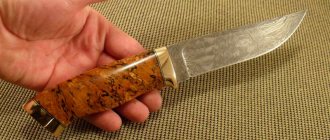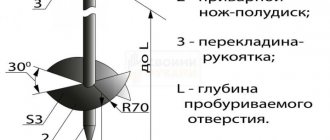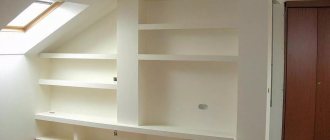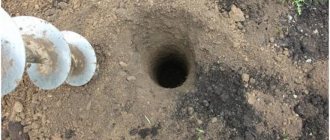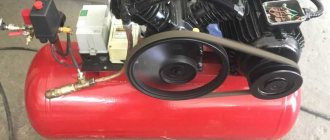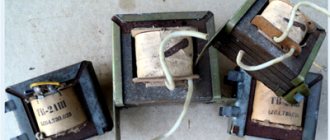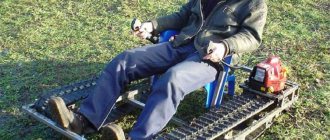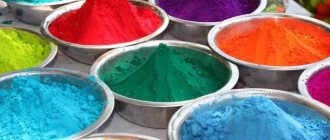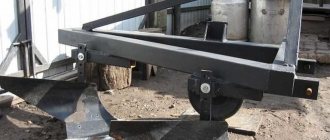Powder painting is a modern technology that allows you to achieve a reliable and durable coating on almost any surface. Application is not particularly difficult if you have the skills, but requires the use of special equipment. The peculiarity of this method is that painting occurs in a dry manner, and a protective layer is formed during subsequent heating.
Everything a beginner powder painter needs to know
Categoriesarticles
03.09.2019
Share this post
It’s difficult for beginners in any business. And painters in the powder industry are no exception. Of course, you can't do without mistakes. But their number can be minimized if you prepare properly. In this article we will share the secrets of powder painting: we will tell you how to properly prepare the surface to be painted, what equipment is needed, and what paint to use - everything a novice painter needs to know for high-quality painting of metal surfaces
The essence and features of the method
During the spraying process, small paint elements are charged by friction or from an external source of electricity. Thanks to the electric field, particles are attracted to the surface to be painted. This is accomplished due to the negative charge of the product.
Particles that do not settle on the metal are captured by a special mechanism in the spray booth and can be reused. When the part is completely covered with the coloring composition, it is placed in a heated baking chamber.
The paint hardening process consists of three stages. The powder particles melt and transform into a viscous flow state. A monolithic layer is formed from the molten mass. The last stage is coating metal surfaces with polymer. After it cools, smooth surfaces are obtained.
Safety during work
First of all, you should take care of the form. You need to protect yourself from possible paint getting on your hair, beard or skin. To do this, you should get a hat and clothes with long sleeves and pants. It would be better if it was a special uniform.
You should also avoid inhaling dust. To do this, it is necessary to check the presence of working ventilation systems and be sure to use a respirator to protect the respiratory system. When removing parts after polymerization, wear gloves to avoid getting cut or burned.
Technology
The process of painting metal parts with powder compositions can be divided into three stages. These are surface preparation, direct painting (spraying) and consolidation of the result (polymerization).
Preparatory stage
He's the most important. The result of the work depends on how well the surface is prepared for painting. Follow these instructions:
- Take a regular clean cloth and clean the entire surface of the workpiece from dust and dirt.
- Use sandpaper or specialized metal brushes to clean areas with corrosion.
- Degrease the part with a solvent, this will increase the adhesion of the surface to the paint.
- Perform priming. To do this, coat the product with paint based on inorganic substances. Thanks to this layer, the risk of air and moisture penetration under the dried paint is eliminated.
- Apply a layer of sodium compounds and chromium nitrate on top of the part. This process is called passivation. It is carried out so that rust does not appear during the preparation of the part for painting. All the steps are quite simple, so everything can be done at home with your own hands.
- Dry the workpiece in a homemade oven.
Important! If the part has a very complex configuration, is heavily soiled and corroded, soak it in an alkali solution.
Powder coating the part
The next stage after the preparatory stage is the actual coloring. Everything is quite simple here: place the part in the spraying compartment, connect and secure the negative wire from your power source to it. If you turn on our converter and bring a bottle with a metal cap to the part at a distance of 20-30 mm, we will see sparks jumping, this means that the voltage is enough to apply powder paint.
To do this, press on the bottle so that part of the powder, along with the air, is blown out of the holes in the cork. Under the influence of high voltage, paint particles become electrified and stick to the product being painted.
Some of the powder will still spill onto the floor, so lay down some newspaper to catch it later.
Advice! If you plan to achieve fire resistance of a part using painting, buy fire-retardant coatings for metal (Negorin, Polistil and the like).
After applying the powder paint, the process of creating a cured polymer layer begins.
Polymerization
The essence of this process is that the painted part is installed in a special oven. There she is exposed to high temperatures for a certain period of time.
To do this, you will need a self-made oven for polymerizing powder paint. For the process to go smoothly, the following conditions must be met:
- Follow the recommendations developed for each specific paint.
- Ensure that each part is heated evenly.
- Observe the exact polymerization time. When it has expired, remove the part from the chamber and leave it in the open air to cool completely.
The use of this method of painting with powder compositions is ideal for those who like to do everything with their own hands. It takes quite a long time to make a polymerization oven yourself, but there are significant cost savings and a high-quality coating.
Equipment selection
Think about what size items will be painted. Based on this, choose your equipment. Its internal dimensions must correspond to the products. If you can’t decide on the exact size, take the equipment with a reserve.
The polymerization oven can operate on gas or electricity. The first option is more expensive. The most common and affordable option for heating a stove is heating elements.
The spraying chamber can be equipped with a Cyclone recovery system or with filters. The first is better when the colors change no more than once a day. The second is suitable for frequent color changes.
For small and medium painting volumes, it is worth using a tribostatic sprayer. It paints difficult spots and corners well. The electrostatic installation can be used for absolutely any volume. But its price is much more expensive.
Polymerization
The use of an oven for polymerization cannot be ruled out, because the paint and varnish material simply will not be able to adhere to metal parts.
The stove is the most expensive piece of equipment on the entire list, but you don’t have to buy it; you can easily make an analogue yourself if you have the right tools and suitable materials.
Paint selection
Which paint to choose is one of the main questions a painter asks at the beginning of his career.
There are 4 types of powder paint: polyester, epoxy-polyester, epoxy and polyurethane.
The first is intended for external use and painting products exposed to ultraviolet radiation. It can withstand heavy atmospheric loads.
Epoxy-polyester paint is best for painting metal products that will be located indoors.
Epoxy paint should be used for painting materials exposed to chemicals and corrosive environments.
Polyurethane paint is used to protect the surface and give it a certain structure.
Necessary items and tools
In order for the paint to adhere perfectly to the surface and be of high quality, fully revealing all its advantages, it is necessary to have high-quality equipment.
You will need:
- Polymerization oven
- Electrical voltage source
- Powder paint sprayer, sprayers for powder paints should be purchased at a specialized store
- LMB
The technology for applying powder paint is not complicated. If you have no experience in using such paints, or in painting in general, this is not a problem.
It is enough to carefully follow the instructions and perform all actions as carefully as possible.
Surface preparation before powder painting
In order to paint products with powder paint of high quality, without defects, the surface must be properly prepared.
You should start with cleaning. Any defects: oil and grease stains, rust, scale, slag, or other things must be removed. This can be done mechanically or with special means designed for each specific case. Then the material must be degreased. You may also need to phosphate or chromate the metal.
Next, the surface is primed. This is necessary to obtain better adhesion (adhesion) of the paint to the metal surface.
If a powder coating painter does not pay due attention to cleaning the product, the paint will not adhere well and you will get defects in the finish coat. And if you degrease it unevenly, the thickness of the coating will decrease on oil stains and increase at their boundaries.
After preparation, you can apply paint. This is done with a special spray gun, which during the spraying process creates an electrostatic charge of the powder mixture.
Making your own oven
To create such a stove yourself, you will need the following list of materials:
- Profile pipes
- Fireproof thermal insulation (basalt slab is ideal)
- Sheet metal for cladding (ordered on any online resource or in a hardware store in the required quantity and size)
- Tangential fan and heating elements
Build process
- Initially, it is necessary to create a frame for the future furnace from profile pipes, then insulation is laid into it.
- The walls are sheathed on the inside using sheet metal; gypsum fiber should be used for sheathing on the outside.
- To create convection, a tangential fan is used, a wide inlet is created for it, and, accordingly, a narrow outlet is created to create draft.
- The fan is inserted into the chamber, its task is to suck in air from above, and then direct it through the heating elements, then the air will flow along the bottom and disperse throughout the chamber. The heating elements must be installed along the walls located opposite each other and connected, having previously been distributed into phases.
- Further, after installation, the heating elements are closed, only the fan is left open, the main part should be outside the chamber, this will avoid melting of the winding.
- At the final stage, an electrical panel is installed to which the camera will be connected. It is recommended to entrust this step to a specialist to avoid incorrect installation.
Thus, the equipment will be no worse than purchased. During the heating period of the chamber, the furnace power will be 12 kW, during operation only 6 kW. This device can use more than just electricity as an energy carrier.
Gas and diesel fuel are allowed, but the design changes slightly; it is necessary to install a gas meter, just as when working with diesel fuel, the installation of additional equipment will be required.
Forming a coating
After the powder paint is applied, the product undergoes the next process - coating formation. It consists in straightening the applied composition. As a result, a film forms on the coating, hardening and cooling of the applied layer occurs.
The baking process is carried out using melting chambers or, in the case of doing the coloring yourself, in a conventional oven.
The temperature should be around 2100C. This procedure lasts one quarter of an hour. It is advisable to maintain a stable temperature regime in the paint shop, but there is no special prohibition on opening the oven. After the required time has passed, the product is removed from the chamber and cooled naturally.
It should be remembered that heated metal is softer than in its normal state. Therefore, it should be placed so that it is not accidentally subjected to mechanical stress or deformed.
It should be noted that coatings that are painted with powder paint are of high quality and degree of resistance to mechanical abrasion. This coating will last a long time. In addition, the powders that are used for application to metal and other surfaces themselves have high-quality properties.
As you can see, the DIY dyeing technology is not at all complicated and it is quite possible to do it. The main thing is to follow all the advice while working and not skip the preparatory stages.
Powder coating of wheels (1 video)
Application of powder paint (20 photos)
General information
So, the meaning of this technology is that a polymer powder dye is sprayed onto the surface to be painted. That is why this method got its name. After applying the dye, the surface is subjected to heat treatment, as a result of which the powder melts and forms a continuous, uniform film.
The coating obtained by this method has the following properties:
- Corrosion protection;
- Good adhesion to the base;
- Resistant to temperature changes;
- Resistance to mechanical damage, including impact resistance;
- Moisture resistance;
- Resistant to chemical influences;
- Excellent decorative properties;
- Durability.
Powder paints
Separately, it should be said about the decorative properties of such a coating, which is distinguished by a variety of colors and textures, which is achieved through the use of various additives.
In particular, powder coating of metal allows you to obtain the following types of surface:
- Matt;
- Glossy;
- Flat or voluminous;
- Imitating gold;
- Imitating wood texture;
- Marbled;
- For silver, etc.
Options for powder coated surfaces
Advantages of powder painting technology
In addition to the possibility of obtaining a coating with high performance qualities, this technology has a number of other advantages, such as:
- Possibility of applying the coloring composition in one layer, which is unacceptable when painting with liquid paints and varnishes.
- There is no need to use a solvent and control the viscosity of the material.
- The dye is highly economical, since the powder that has not settled on the surface to be painted can be reused. To do this, spraying is performed in a special chamber, which allows you to collect all unspent powder. As a result, the cost of powder painting of metal is lower than applying paintwork using other methods.
- The painting process takes little time, and after applying the paint, you do not have to wait for it to dry.
- Environmental safety, since the dye does not contain toxic organic compounds. As a result, there is no need to use powerful ventilation systems.
- The dye application technology is highly automated, which simplifies the process of learning how to operate the equipment.
Powder painting equipment
Flaws
Like any other technology, powder coating metal has some disadvantages:
- It is impossible to eliminate local coating defects - if they occur, it is necessary to completely repaint the surface.
- It is impossible to do the painting yourself, as this requires special equipment and workshop conditions.
- The dimensions of painted surfaces are limited.
- Impossibility of tinting paint - it is allowed to use only powder paints for metal from manufacturers.
- It is impossible to paint parts that will later be welded, since burnt areas of the coating cannot be restored.
Preparing the surface for painting
Powder paint for metal: properties and characteristics
The main technical characteristics of powder paints include:
- dispersion composition;
- powder flowability;
- bulk density;
- ability to electrify;
- degree of fluidization.
Dispersion composition
The composition of the bulk material includes fine particles that differ in grain size. Grains are usually divided into true particles and aggregates, which are an accumulation of small grains. When applying the material with a spray gun, the true size is not taken into account; to separate large fragments, the technique of sifting the powder through a sieve is used.
For electrostatic application, the grain size is in the range from 10 to 100 microns, but to obtain a thin paint layer the parameter is reduced to a range from 3 to 40 microns. If the technology of powder spraying in a fluidized bed is used, the fraction size increases to 350 microns (comparable to the thickness of the applied enamel layer).
Fine powders allow you to obtain thin coatings, but are prone to uneven settling. Materials with an increased grain size may crumble from the surface, which leads to defects in the paint layer.
Flowability
The flowability of the powder depends on the composition, degree of moisture and particle size. With a reduced parameter, the distribution of paint over the protected surface deteriorates. Powders with grains of a round configuration have increased flowability, but when moisture enters, the characteristics of the material deteriorate. It is allowed to introduce pyrogenic silica or aerosil into the composition of powder paints, which increase flowability. To maintain the parameter declared by the factory, the powder is stored in containers that prevent the powder from being saturated with water vapor.
Bulk density
The density of the material depends on the type of powder and the size of the granules; with the introduction of additional additives (for example, color pigments), the parameter increases by 1.5-2 times. Paint manufacturers are trying to achieve a high density of finely dispersed paint material. When the parameter drops, a deteriorated distribution of grains over the treated surface is observed, on which zones with an insufficient enamel layer are formed.
Electrification ability
Fine powder is electrified during storage, transportation and preparation for application. The charge strength depends on the particle size, the type and chemical composition of additional additives, air and material humidity, and the intensity of mechanical impact.
Electrostatic application technology uses epoxy, polyvinyl buteral or polyethylene paint. As the granule size decreases, the charge retention time increases, but when the air is saturated with moisture, the parameter decreases.
Fluidizing ability
Fluidization of powder materials affects the quality of the paint and varnish coating when using fluidized bed application technology. If the paint contains particles of polyethylene or polypropylene, then the mixture has a low ability to fluidize. A decrease in flowability with simultaneous saturation of the powder with moisture negatively affects the parameter; the application of such materials requires special equipment (for example, installations with a vibration unit and a vortex module).
Required materials and equipment
So, let's give a detailed description of the technology of powder coating of metal. To create a durable coating layer on it you will need:
- oven (chamber) for polymerization: you can make it yourself or purchase it in a specialized store;
- spray gun: since such a device costs a lot, it can also be assembled from a converter, often used in lighters for gas stoves, a power supply and an ordinary plastic bottle;
- naturally, the paint itself.
Drying ovens will need to be connected to a voltage source of 25 kW. In operation it will produce 6 kW, while warming up a little more - 12 kW. To make it, you will need thick sheet metal for the housing, heating elements, a tangential fan in which air masses will move in one direction, as well as any non-flammable heat insulator for the casing.
The heating elements are placed parallel to each other on opposite walls of the furnace. The main part of the fan is mounted outside the chamber. It is welded in such a way that the exit is narrow and the entrance is wide enough. It is also necessary to make a separate chamber for spraying in the drying oven. For processing large parts, it is better to provide rail-type trolleys.
Advantages and disadvantages of the method
Advantages of metal powder painting technology:
- environmental friendliness of the coloring composition.
- minimal shrinkage due to the absence of solvent;
- large selection of colors;
- high mechanical stability of painted surfaces;
- attractive look.
Flaws:
- To paint large workpieces, you need to buy a large oven.
- It is impossible to apply a thin layer of coating.
- The powder melts only at high temperatures. Because of this, the technology is not suitable for painting plastic and wooden blanks.
Painting metal elements (Photo: Instagram / ooo_pc_alvit)
Powder coating technology. Recovery systems
The main purpose of the recovery system is to capture as much powder paint as possible and return it to the feeder. The recuperator filters the paint, which can then be reused.
The most commonly used is a two-stage capture system. At the first stage, a dust separator is used, and at the second stage, paint is captured using a filter. Recovery allows you to reuse up to 98% of the paint loaded into the feeder and not deposited on the surface of the part.
Coarse and fine air filters supply purified air to the work area. Thanks to this, there will be no need to use fans, heat the air in winter and remove dust. With the help of a recovery system, energy consumption and, accordingly, overall painting costs are significantly reduced. Automatic filter cleaning ensures that the air flow operates without reducing the speed and provides a high degree of air purification for a long time.
Areas of application
Areas of application of powder painting technology:
- processing of glass panels, MDF sheets;
- powder coating of metal products;
- painting products made of natural and artificial stone, ceramics;
- aluminum coating.
Painting car rims (Photo: Instagram / polimerka22)
General information
Such an application technology will require special equipment, and also, magnetization of paint is not the only technological feature. After applying the paint and varnish composition, the stage of polymerization occurs, or rather heating to a certain temperature.
Advantages of powder coatings
In fact, this section of the article could easily take several pages, because powder-type paints simply have no competitors in terms of durability and quality
But in order not to bore the reader with a list of all the obvious qualities, we suggest focusing only on the most basic and characteristic features. which only this material has:
which only this material has:
- Due to the high degree of adhesion of the paint to the product being painted, not just a thin film is obtained on the surface, as when using conventional paints, but a full-fledged coating that is connected at the molecular level. The magnetization stage, as well as polymerization, will simply introduce the paint into the metal structure.
- It is almost impossible to damage the powder coating mechanically, because the paint becomes one with the product, and when the latter is deformed, it also begins to take on its shape and configuration.
- Very often, when painting a product with complex shapes, you may encounter the problem of unpainting in places that are very narrow or small, and the spray gun does not reach there. Powder paint does not have such disadvantages, because during the polymerization process the paint begins to spread independently throughout the product itself and gets into all half-open places.
- Powder-type coatings are not afraid of just moisture, but also round-the-clock contact with water. It is due to this quality that this paint is often used to paint cars or individual automotive parts that need special protection, for example, those located at the very bottom.
- Please note that painting with powder paint yourself is never difficult, but drips from regular paint on the surface are another difficulty if you do not have the appropriate experience in painting. But there are no problems with powder products, since during polymerization the paint begins to spread over the surface and independently takes the required position.
- Stable polymers in powder dyes do not react to ultraviolet rays, and, therefore, the coating will not fade in the sun and will not lose its beautiful appearance over time.
Helpful advice! Even if you have experience working with liquid paints, before you start painting with powder, it is better to practice on something in advance, since not only the application process will be different, but there will also be certain specifics that should be taken into account when working.
Flaws
And yet, when starting work, it is worth knowing and taking them into account.
- A certain difficulty in covering a surface with paint is associated not simply with the purchase of special equipment, but also with the experience when all the features of the technology will be brought to automaticity.
- Due to the high level of density and adhesion of paints and varnishes to the surface, it will be quite difficult to remove the old coating, even though there are special removers for powder paint, which, although they make the work easier, but only slightly.
- Taking into account the fact that the cost of the dyes themselves is quite high, the cost of the finished product increases several times because of this, and although for business this is more of a plus than a minus, if it is necessary to perform one-time painting, the profitability of the event is questionable.
- The application instructions contain quite a few points, and each should be followed flawlessly. Otherwise, the coating will be of poor quality and you will need to start all over again.
- The preparatory stage for a surface for powder coating must be carried out with special care, because if defects remain on the surface, they will all appear in the future and disrupt the adhesion of the coating to the product.
Please note that powder paint, which contains a wide variety of chemical components, can cause significant harm to health, and therefore personal protective equipment should not be neglected when working with it. https://www.youtube.com/embed/d5ahP9EzfDY
